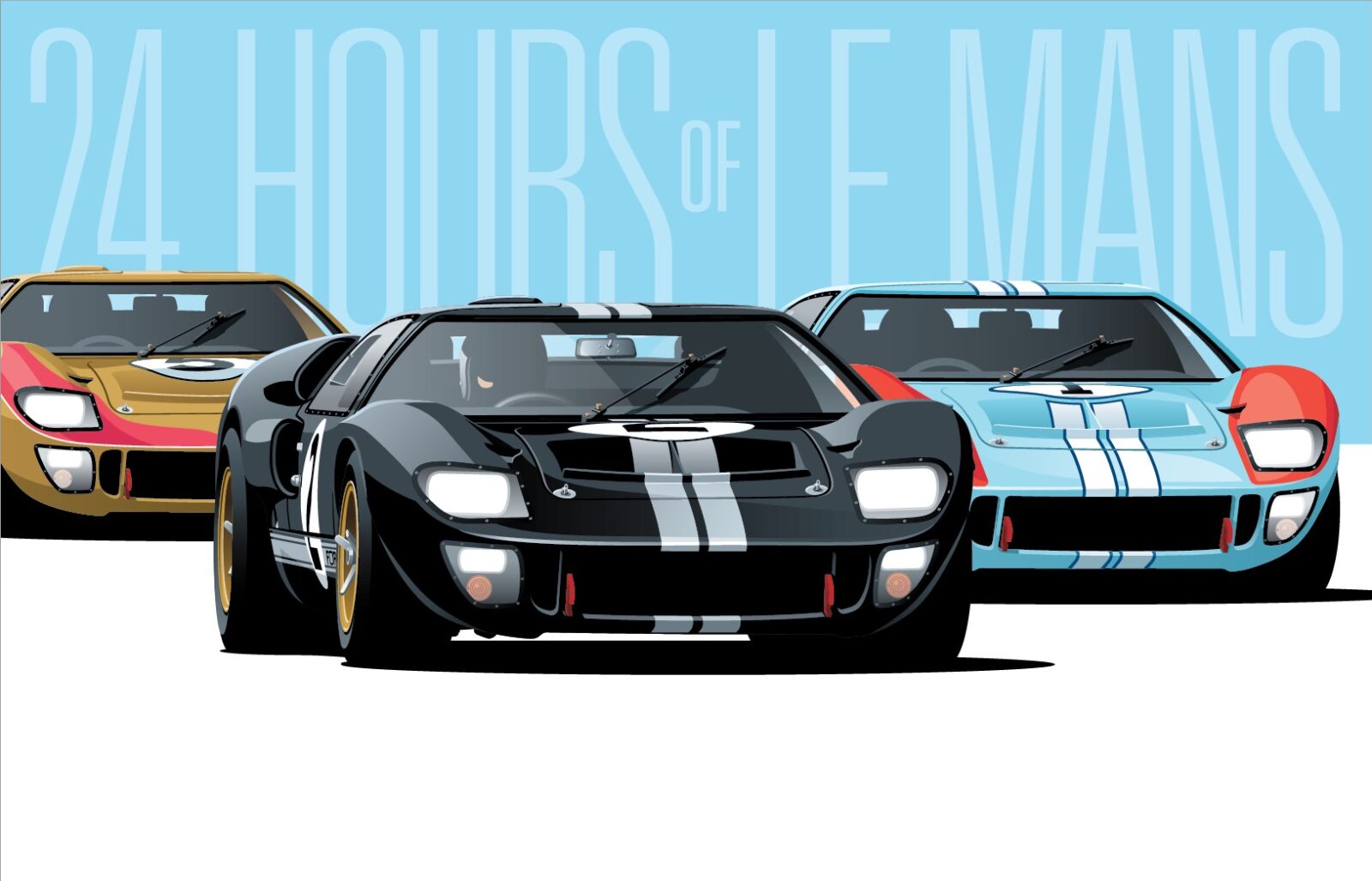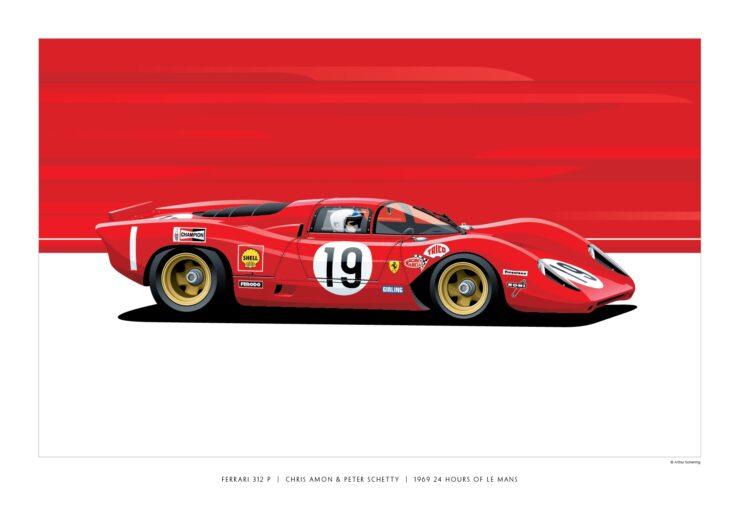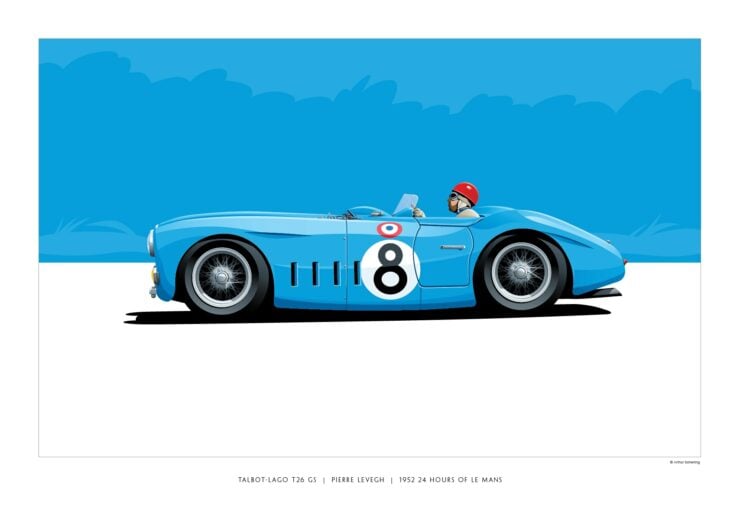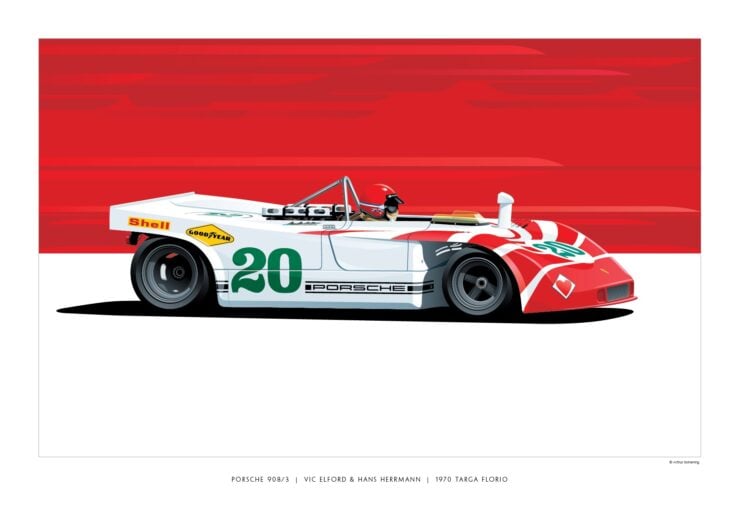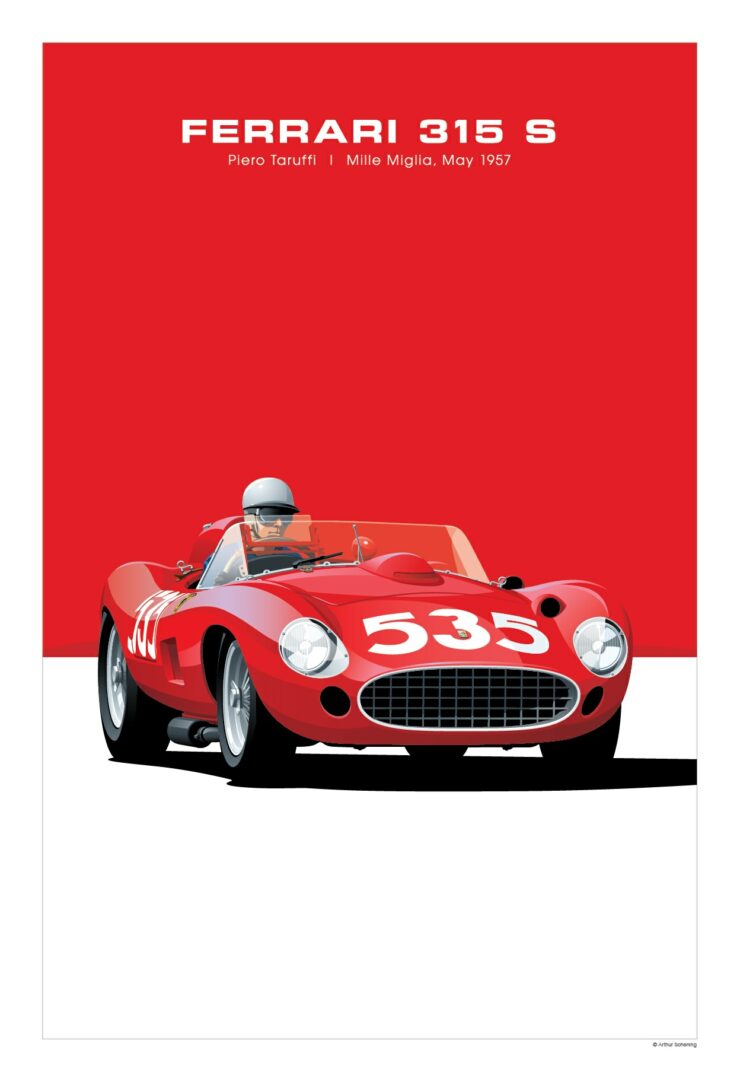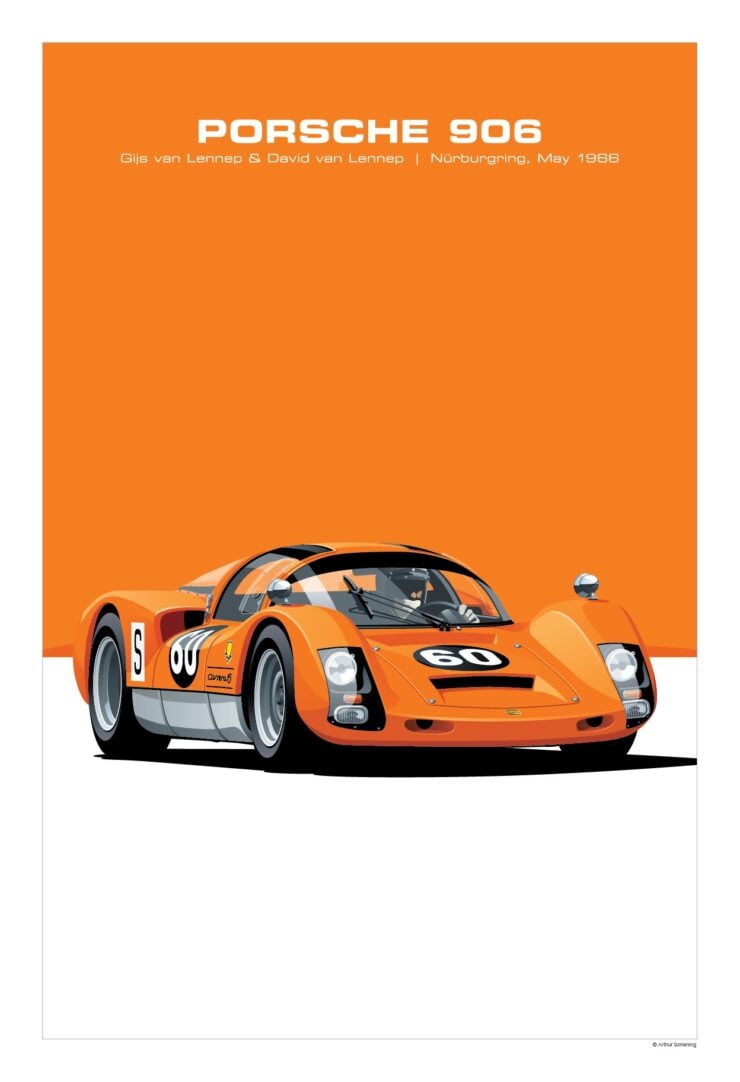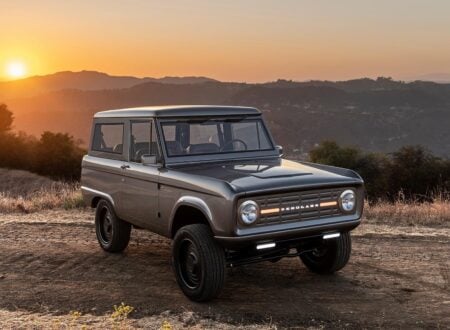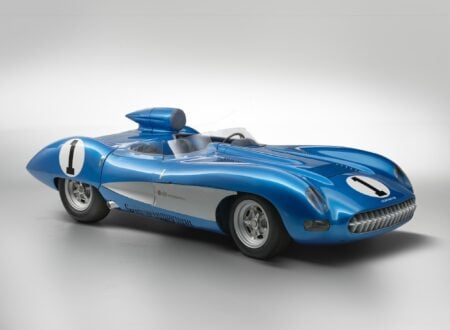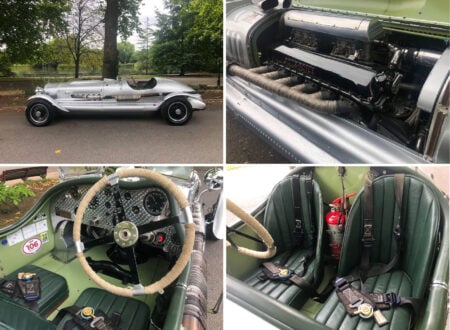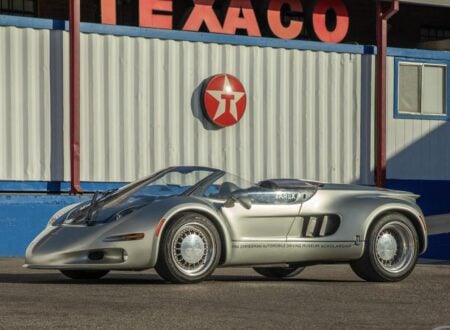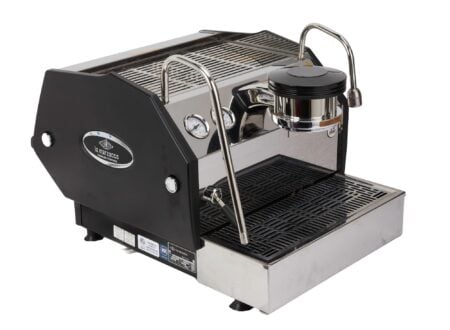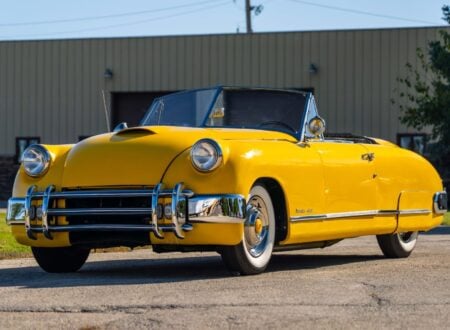Arthur Schening is an artist and graphic designer who is perhaps known best for his automotive art, characterized by its close attention to detail, clean minimalism, and well-researched historical accuracy.
Arthur runs Schening Creative, his own design and illustration firm. He has well over 20 years of experience working for all manner of clients around the United States developing printed materials, infographics, websites, online materials, exhibits, logos and corporate branding.
When he’s not hard at work Arthur likes to indulge his passion for classic cars, particularly classic racing cars. His work now hangs on the walls of some very special garages and homes around the world. If you’d like to see more of his work or order some for yourself you can hit the red button below.
The following art and the captions below each piece are all the work of Arthur Schening. If you’d like to read more about his work or buy some of his prints you can visit his official website here.
The Ferrari 312 P driven by Chris Amon and Peter Schetty at the 1969 24 Hours of Le Mans. On the first lap of the race, gentleman-driver John Woolfe – driving a brand new Porsche 917 he had purchased just days before the race – lost control of his car at over 150mph and hit the guard rail. The car disintegrated; the burning fuel tank slid across the track directly in front of the oncoming Ferrari 312 P of Chris Amon.
The burning fuel tank lodged itself underneath Amon’s Ferrari causing a huge fire. The on-board fire extinguisher put out the fire and Amon was uninjured, but the race was over for the Ferrari. John Woolfe died of his injuries while on route to the hospital. The sister car, driven by Pedro Rodriguez and David Piper, continued on until a gearbox issue in the 16th hour forced them to retire.
The Ferrari 312 P could not hope to compete for overall victories against the much more powerful Porsche 917s during the 1969 season, but it did have some success in the 3-litre prototype class. The 312 P was another casualty of the FIA decision to lower the minimum number of production cars needed to qualify for Group 4 (Sportscars), while imposing the 3-litre engine limit for top class Group 6 Prototypes.
At the 1952 24 Hours of Le Mans, French driver Pierre Levegh took the overall lead at 2am, and 12 hours later, was still in the lead having driven solo since the start (in the 1950s there was no rule on how long a driver could stay at the wheel). Levegh did have a co-driver, Rene Marchand, but Levegh believed that his best chance for victory was on his own.
The previous year, he and Marchand finished fourth in a Talbot-Lago T26, a car that Levegh believed could be improved, and had a chance to win in 1952. But the Talbot factory refused to let Levegh tinker with their car, so he bought his own, and got to work modifying it to his liking. The competition in 1952 was substantial, including the past year’s winner Jaguar. Mercedes-Benz, Briggs Cunningham, Aston Martin and Ferrari all brought multiple cars.
Levegh was realistic about his car’s performance, he also knew that the faster cars would wear themselves out fighting for the lead, which they soon started to do. Levegh steadily moved up the leader board, and at 2am the leading Gordini headed to the pits with engine problems – the number 8 Talbot-Lago T26 GS driven by Pierre Levegh was in the lead. As the race progressed, his team and wife begged him to take a break and allow co-driver Rene Marchand to take over. He ignored their pleas each time. At his final pit-stop of the race, Marchand tried to pull Levegh from the cockpit, but was pushed away. The now totally exhausted Levegh’s lead had grown to 4 laps.
There was less than 2 hours left in the race when a pair of Mercedes raced past the pits, with no sign of the Talbot. Levegh’s race was over – the Talbot’s crank had given up. Some reports claimed it was due to a mistake by Levegh, and he was quickly blamed for the loss by the French public. But there is no evidence that the fault could have been avoided, and many credit him with keeping the car running as long as it did.
The heartbroken Levegh never discussed the race in public afterwards. He returned to Le Mans in works Talbots in 1953 and 1954, with a best finish of 14th place (1953). Alfred Neubauer, the Mercedes team boss, recognized his passion for the race and offered Levegh a seat with John Fitch at the 1955 race. The 1955 Le Mans race is mostly remembered for the horrific accident, the worst in racing history. Pierre Levegh’s 300 SLR smashed into the Austin-Healey of Lance Macklin who had slowed to avoid Mike Hawthorn’s Jaguar as it entered the pits. Levegh’s car became airborne, and landed on top of an embankment and disintegrated into the closely-packed crowd. Pierre Levegh was killed in the accident along with 84 spectators.
There were 4 Porsche 908/3s entered in the race, JW Automotive Engineering brought three cars, and Porsche Salzburg Konstruktionen (the defacto Porsche factory team) entered the number 20 car. The 908/3 was designed by Porsche especially for use on just two corner-heavy tracks in the World Sportscar Championship, the Targa Florio and the Nürburgring.
Vic Elford was fast in practice, but very early in the race he abruptly swerved to miss a rock in the road and broke the steering arm. Spectators pushed the Porsche off the track, and Elford spent the rest of the day enjoying the race and the hospitality of the fans. The JW Automotive Engineering Porsche’s finished in 1st, 2nd, and 5th positions. At the Nürburgring 1000km, the 908/3 again finished 1-2, with Vic Elford driving the winning car.
Taruffi had raced in the Mille Miglia 13 times without winning, he was 51 years old, and had promised his wife the day before the race that he would retire if he won. His previous best finish was third place in an Alfa Romeo 8C in 1933. Enzo Ferrari became aware of Taruffi’s promise to his wife, and decided to help him accomplish his goal.
Ferrari offered Taruffi a seat in one of his cars, the 4.1 litre V12 315 S (Ferrari also needed an experienced driver, due to Eugenio Castellotti’s fatal crash in March during testing of the new Ferrari Grand Prix car). With many years of experience at the Mille Miglia, Taruffi could drive the 1,000 mile course without a navigator, which was a must for most drivers. Taruffi finally got the win over another Ferrari 315 S driven by Wolfgang von Trips, by just 3 minutes.
Tragically, the 1957 edition of the Mille Miglia would be the last. A Ferrari 335 S suffered a burst tire and crashed into the crowd gathered on the side of the road, killing the driver Alfonso de Portago, his navigator Edmund Nelson and 10 spectators, five of them children. A few days after the race, the Italian government banned all motor races on public roads. Taruffi kept the promise made to his wife and retired.
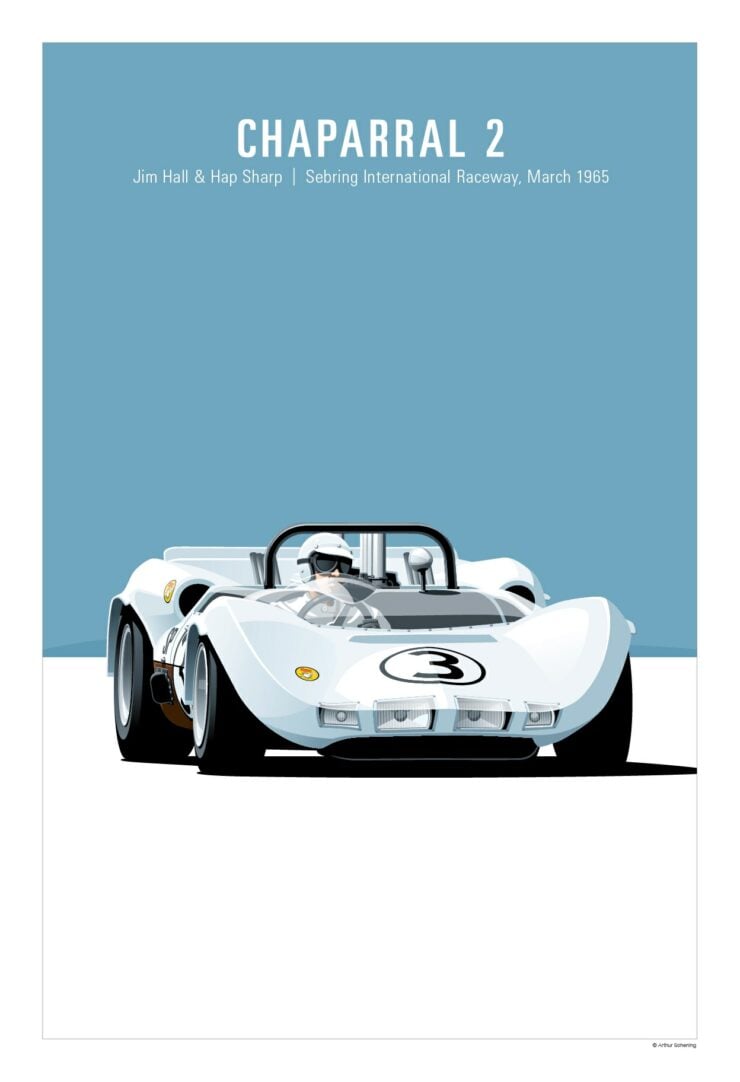

The 1965 Sebring race was the first year the FIA allowed both prototype cars and large-displacement sports cars to race in the same event – even though the existing regulations prohibited it. This allowed the race promoter to invite the Chevrolet powered Chaparral team founded by Jim Hall and Hap Sharp to race against the big Ford and Ferrari teams.
Along with being a very skillful driver, Jim Hall was an engineer and chief designer of Chaparral Racing Cars. Chaparral brought two cars, the first driven by Jim Hall and Hap Sharp, the second car was driven by Bruce Jennings and Ronnie Hisson – they qualified first and second. Although the Chaparrals were much lighter than the Ford’s and Ferrari’s, and very fast – they had won the 1964 United States Road Racing Championship – there was concern that they would not last 12 hours (The USRRC events were much shorter, typically just 2 hours).
As expected, the number 3 Chaparral took the lead early in the race… and then shortly after 5 o’clock, the rains came. The rain fell like a wall of water, 5 inches in the first 30 minutes of the storm, with winds reaching 50 mph. The race proceeded at a slow pace, except for the small GT cars with skinny tires that raced past the larger Prototypes and big GT cars on track with ease. Even so, the small GT cars remained many laps down. With three hours left in the race, the rains slowed and finally ended. The number 3 Chaparral was still in the lead, and stayed there until the end of the race. They finished four laps ahead of the second place GT40 driven by Ken Miles and Bruce McLaren.
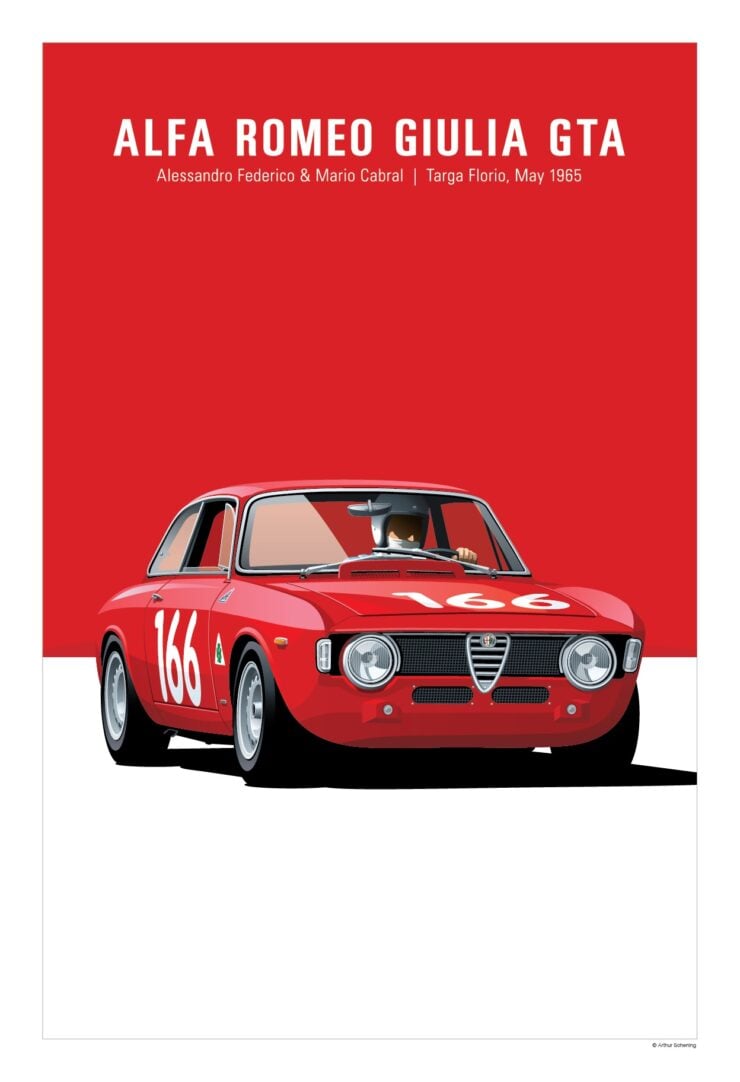

The Autodelta-prepared, team Pegaso GTA dropped out of the race after 4 laps due to mechanical issues. At the time, the Targa Florio was one of the great motorsport events. It was a 10 lap race on a 45 mile circuit on public roads, twisting and turning through the Sicilian landscape. The 1965 race was won by a Ferrari 275 P2 driven by Lorenzo Bandini and Sicilian hero Nino Vaccarella.
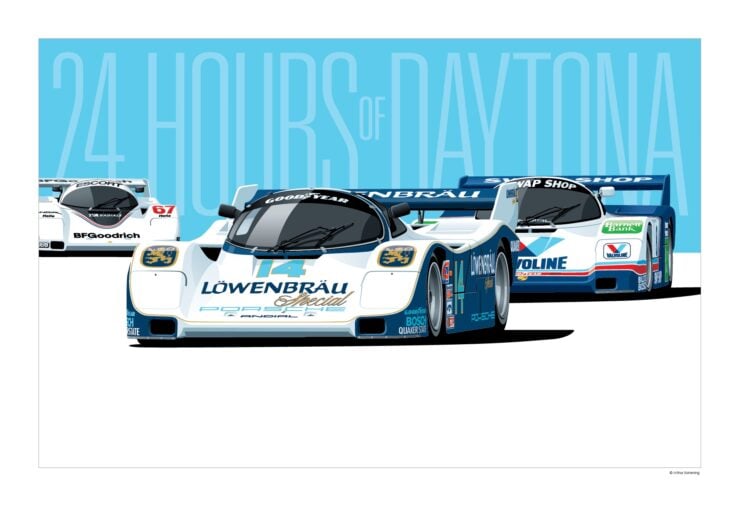

The Holbert Racing Löwenbräu Special Porsche 962 was one of the most successful cars in IMSA GT Championship history, winning numerous races and championships. The Löwenbräu Special Porsche started its career in 1984, winning several times during its first season. It continued this success during the 1985 season, winning Al Holbert the Driver’s Championship, and Porsche the GTP Championship for Makes.
Holbert entered the car in the 1986 season opener at the 24 Hours of Daytona (it had finished second in 1985). The race was one of the most competitive races in Daytona history, the number 14 Porsche 962 claimed victory over the Henn’s Swap Shop 962 by just 49 seconds. Al Holbert, for the second year in a row, won the Driver’s Championship, and Porsche the GTP Championship for Makes.
For the 1987 season, the Löwenbräu Special 962 was prepared for its third appearance at the 24 Hours of Daytona. At the end of the 24 hours, the Holbert Racing 962 was again victorious. To this day, the Löwenbräu Special Porsche 962 is the only car to ever capture back-to-back wins at America’s premier endurance race.
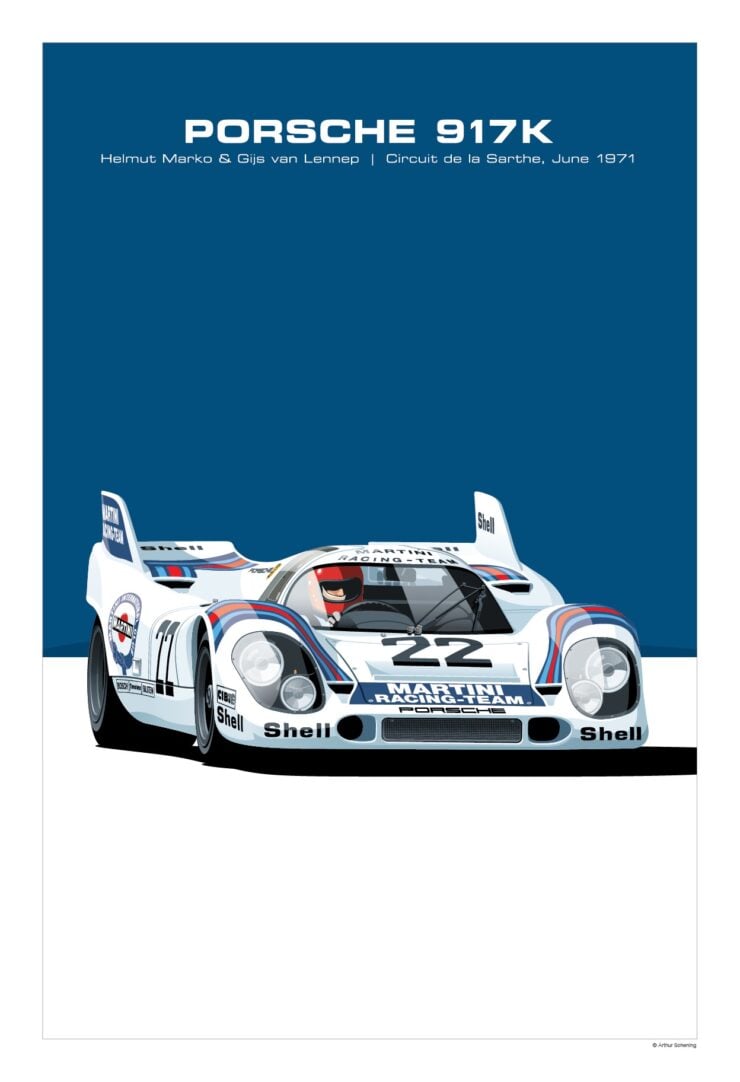

Porsche had won Le Mans the previous year with another 917K, and dominated the World Sportscar Championship for two years. But the 1971 race marked the end of an era – new regulations were introduced to limit engine size to 3 litres for prototypes. In 1972 Porsche sent the 917 to the U.S. to take part in the Can-Am series – the 917 dominated the series.
The Racing Team Holland Porsche finished in 7th place overall, and 1st in the 2.0 litre sportscar class. Earlier in the season Gijs van Lennep took the overall victory at the Grand Prix de Paris with the orange 906. Later during the 1966 season, Gijs and David van Lennep driving the Porsche 906 would again win its class at the Spa 1000 km.
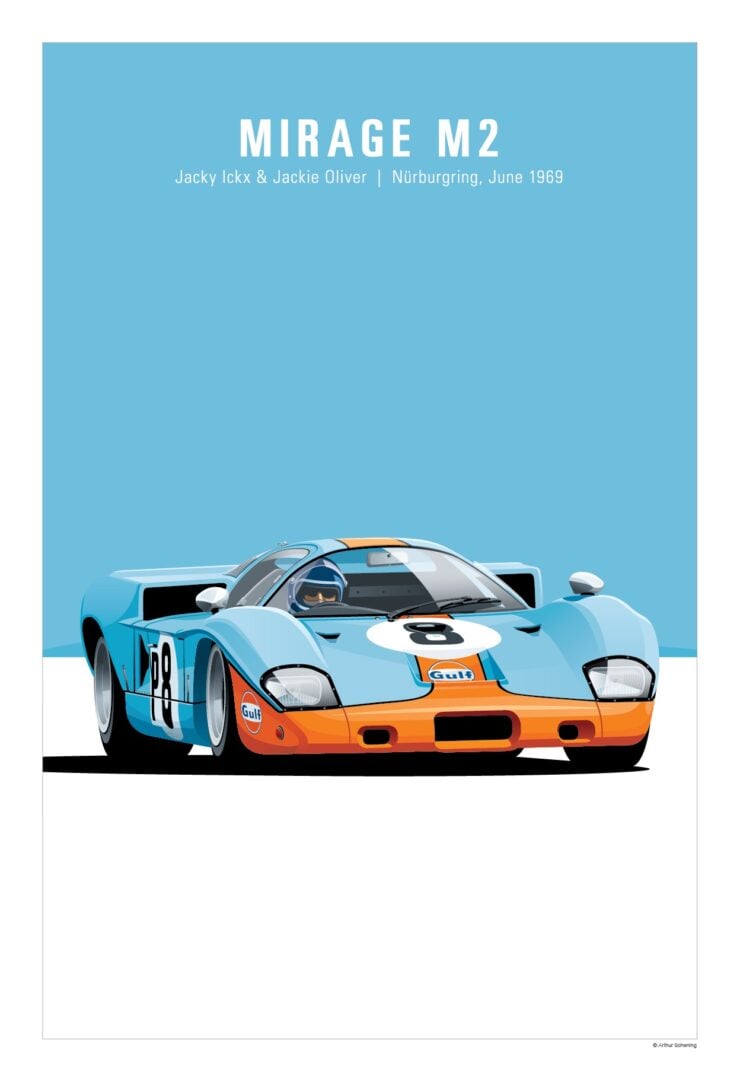

For the 1968 World Sportscar Championship, the FIA unilaterally decided to impose a 3-litre engine limit for Group 6 Prototypes (as an effort to reduce the increasingly dangerous speeds at the faster circuits). This made cars like the Ford Mk4 and Ferrari 330 P4 instantly obsolete. Manufacturers could continue to race the existing 5-litre limited Group 4 cars with a production requirement of 50 vehicles (i.e., Ford GT40s, Lola T70s, etc.).
As the GT40 was not expected to be competitive by 1969, JW Automotive, which ran the Gulf GT40 team at the time, began development of a new 3-litre Group 6 Prototype (the Mirage M2). When the FIA later lowered the minimum production number for Group 4 from 50 to 25 cars, Porsche began an effort to take advantage of the new rule.
The result was the Porsche 917. While the 917 had some early development issues, it was the nail in the coffin for the Mirage M2, and other newly designed 3-litre Prototypes. During the 1969 season, the Mirage M2 met with little success. At the 1969 Nurburgring 1000 kms, both the Jacky Ickx and Jackie Oliver M2, and the sister car driven by David Hobbs and Mike Hailwood, failed to finish the race.
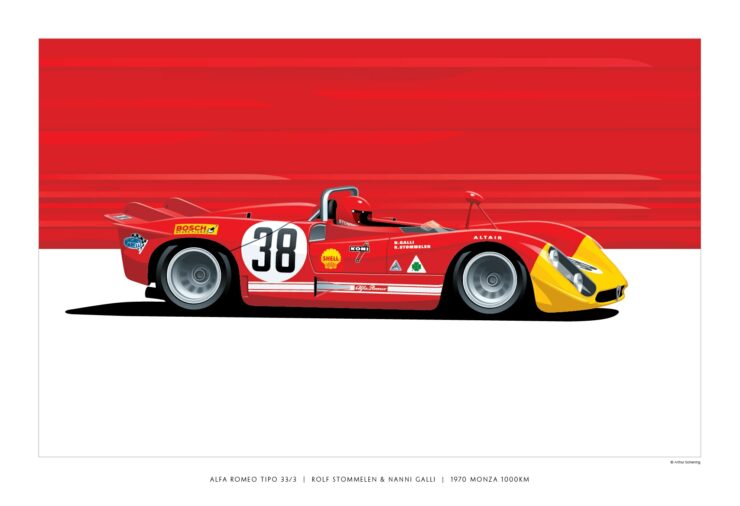

Alfa Romeo’s Autodelta team brought 4 cars to Autodromo Nazionale di Monza – the number 41 Alfa driven by Andrea de Adamich and Piers Courage finished 13th, the number 39 and number 40 cars failed to finish the race due to mechanical issues. Autodelta brought the 4 cars (with special Coda Lunga bodywork) to Le Mans in June, unfortunately none of the cars finished the race.
All images copyright 2023© Arthur Schening

